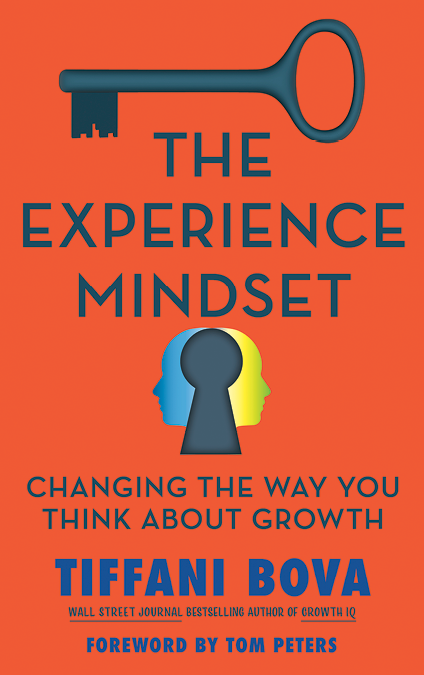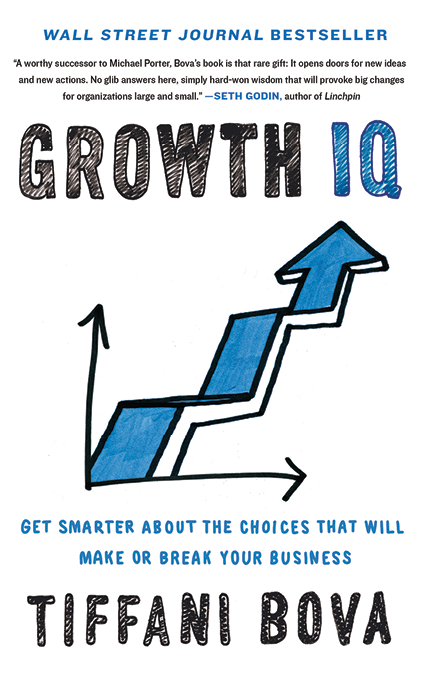- Home
- Media Kit
- MediaJet
- Current Issue
- Past Issues
- Ad Specs-Submission
- Ad Print Settings
- Reprints (PDF)
- Photo Specifications (PDF)
- Contact Us
- PRIVACY POLICY
- TERMS OF USE
![]()
ONLINE
![]()
ONLINE

People, Process, Technology, and Culture
Editors’ Note
Tiffani Bova is the global customer growth and innovation evangelist at Salesforce, and the Wall Street Journal bestselling author of Growth IQ. Over the past two decades, she has led large revenue-producing divisions at businesses ranging from start-ups to the Fortune 500. As a Research Fellow at Gartner, her cutting-edge insights helped Microsoft, Cisco, Salesforce, Hewlett-Packard, IBM, Oracle, SAP, AT&T, Dell, Amazon-AWS, and other prominent companies expand their market share and grow their revenues. She has been named one of the Top 50 business thinkers in the world by Thinkers50 twice. She is also the host of the podcast, What’s Next! with Tiffani Bova.
Company Brief
Salesforce (salesforce.com) empowers companies of every size and industry to connect with their customers in a whole new way through the power of AI + data + CRM.
Will you provide an overview of your role and areas of focus at Salesforce?
As the Global Growth Evangelist at Salesforce, my role is almost exclusively customer facing. I get the honor and privilege of spending time with our amazing Trailblazer customers looking for best practices and insights that I can share with others in our ecosystem.
How do you define Salesforce’s culture and values?
Salesforce is built on a set of five core values:
• Trust. Trust is our #1 value. It means we act with transparency and lead with our ethics.
• Customer Success. We prioritize our customers’ success and the success of the customers they serve.
• Innovation. We want our products to be the most relevant, easy-to-use, integrated, scalable, and global products out there, delivering a faster time to value for our customers.
• Equality. We are committed to creating a more equal world and believe we are more powerful working together.
• Sustainability. Everything rests on a stable climate, so we’re helping every organization achieve net zero carbon emissions and lead by example as a net zero company.
Guided by our values, we believe that it isn’t enough for businesses to do well – we believe that businesses must do good and use their business as a platform for change.
Since our founding, we’ve continued to invest in our local communities and give back as we’ve grown. One of the ways we use our platform for change is through our 1-1-1 philanthropic model, where we pledge 1 percent of our equity, 1 percent of our time, and 1 percent of our product to giving back to our communities. What we’re most proud of is that 17,000 companies from over 100 countries have joined us in the Pledge 1 percent movement.

Salesforce is also a big proponent for climate action, and we are proud to be a net zero residual emissions company with 100 percent renewable energy across our operations.
Our values are our guiding compass, helping us venture into new places and reach great heights. By making technology more accessible, we’re helping create a future with greater opportunity and equity for all.
What have been the keys to Salesforce’s
industry leadership and how do you describe the Salesforce difference?
Together with Salesforce and our ecosystem of customers and partners, Trailblazers fuel a global Salesforce Economy that will create nearly $1.6 trillion in new business revenue and 9.3 million new jobs by 2026, according to IDC, a market intelligence firm. Our Trailblazer community is more than 19 million strong, with more than 2,000 community groups, across more than 100 countries.
We are proud to be the #1 CRM, and we are also now the world’s fastest growing top 5 enterprise software company. In addition to being the #1 CRM provider worldwide, Salesforce is also the #1 market share leader for CRM in North America, Western Europe, LATAM and Asia-Pacific, including Japan.
We didn’t just do this through rapid growth. We did it with the right values every step of the way. Our values are what’s led us to more than $31 billion in revenue. In addition to being the category leader, we’ve also become a leader in philanthropy, innovation, and culture.

What interested you in writing the book, The Experience Mindset, and what are the key messages you wanted to convey in the book?
After publishing my first book, Growth IQ – a Wall Street Journal bestseller that outlined ten paths to sustainable and repeatable growth, I realized to my dismay that although I had an entire chapter devoted to customer experience (CX), I had not dug deep enough into the interconnectedness of employee experience (EX) and its impact on CX.
Like so many others, I intuitively knew these two were linked, but it wasn’t until 2018, while I was on stage in Vancouver in front of a few thousand people, when it hit me: “Globally, Salesforce is one of the best places to work,” I said. “It is one of the most innovative companies, and it is the fastest-growing enterprise software company.” After pausing to let that sink in, I added: “I don’t think these three things are a coincidence.”
I realized those last words were true as soon as they left my mouth. It followed that there were points of connection – a cause and effect – between employees, customers, and growth, whereby each factor buoyed the others. Standing on that stage is when it occurred to me: pleasing customers was about more than simply “putting customers first;” it has to start with a healthy, engaged and productive employee base to make the vision of an organization come to life.
While many executives have made big claims about the importance of the employee experience to the experience of the customer, where was the research to back up their assertions? Furthermore, if this idea was so obvious, why wasn’t every company building stronger employee experiences as a way to improve CX?
This stark realization began a transformative two-year journey. In the process, I developed a far better understanding of the current state of EX and CX corporate initiatives, the connection between the two, and how a more symbiotic relationship between them could produce a virtuous cycle, resulting in incredible growth results for any company.

How important is it for companies to identify who owns the employee experience?
There’s a need for a clear champion or team responsible for operationalizing employee data, putting insights into action, and clearly defining what EX means to their organization. Unfortunately, the research showed that 74 percent of the global C-suite surveyed admitted that no one is truly “owning” the employee experience, and 73 percent say they don’t know how to use their employee data to drive change. Without clear direction, developing the right mindset to improve both EX and CX with greater intention becomes almost impossible.
How can business leaders lead a people-centered turnaround at a company?
Employees carry the torch every day for the values and mission of their company. They are the facilitators of every moment that matters – the positive connections and negative pain points encountered by a customer or a fellow employee interacting with a brand or employer. There is tremendous value to the bottom line when leaders put people at the center of the business, especially when they are driving a turnaround at a company. Best practices include communicating openly and honestly, fostering a positive culture, investing in employee development including re-skilling, empowering employees with autonomy and decision-making authority, recognizing and rewarding performance, seeking and acting on feedback, and maybe the most important, leading by example.
How critical is it for business leaders to know if they are prioritizing CX at the expense of EX?
I often run through a series of questions when meeting with leaders to uncover current strategic priorities focused on customer experience and employee experience. This allows me to determine whether they have over-indexed CX at the expense of EX or the other way around. Once we can agree that is the case, the conversation shifts to what can be done to create a more balanced approach. It is critical for leaders to understand how their current priorities are impacting the performance of other parts of the business.
“Employees carry the torch every day for the values and mission of their company. They are the facilitators of every moment that matters – the positive connections and negative pain points encountered by a customer or a fellow employee interacting with a brand or employer.”
How do people, process, technology, and culture play a role in boosting both EX and CX?
In the early 1960s, business management expert Harold Leavitt formulated a new model on the components of every business called Leavitt’s Diamond Model, which identified three variables – People, Process and Technology [PPT] – which were used for creating change in an organization. I took the liberty to add one more variable – culture – to this multi-dimensional framework creating PPTC. “Building an Experience Mindset” is all about balance and intention between various CX and EX initiatives. Breaking down complex and often siloed efforts across the organization can highlight the interconnected nature of each variable. Focusing on one without considering the others is a recipe for suboptimal performance.
How can business leaders start developing an experience mindset?
I would say there are three things I advise leaders to do:
1. Do an inventory on current initiatives focused on either CX or EX.
2. Identify the top 3-5 KPI (key performance indicators) used to measure performance and the current state of CX and EX.
3. Do a short 3-5 question survey of both customers and employees on aspects of PPTC to uncover where the greatest disconnects exist.
What do you see as the keys to effective leadership?
So many things play a part in effective leadership. However, considering the overarching theme of “The Experience Mindset,” I’d say that asking better questions, listening with more interest, and championing an unwavering feedback loop between the company, its employees, and its customers are keys.
What advice do you offer to young people beginning their careers?
Do not forget about the people – those that work for you and those that buy from you. All those stakeholders that play a part in your success. If you take care of your people, the rest will take care of itself.